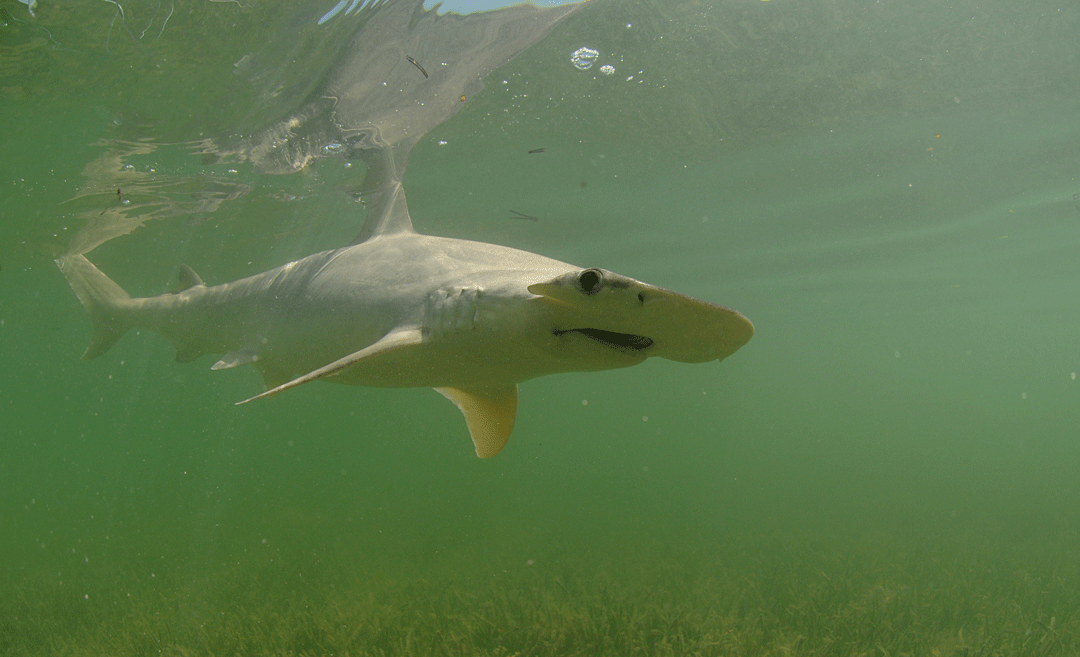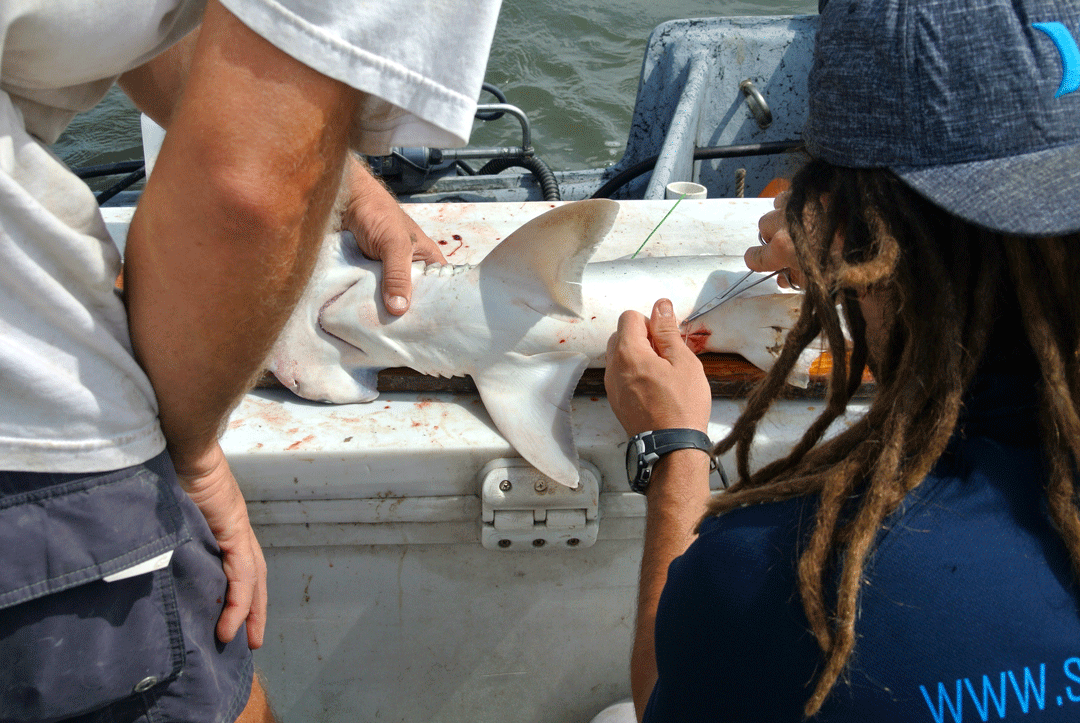Sharky, it’s cold outside

Photo © Beth Swanson | Shutterstock
We have tagged 44 bonnetheads sharks with acoustic transmitters in South Carolina since 2015. These tags allow us to track the shark’s migrations throughout the coastline of the southeastern United States. The bonnethead is known to exhibit site fidelity, which means the sharks exclusively return to specific estuaries every year. Our sharks were captured in the North Edisto River, SC, and while there are many other available estuaries, they choose to return back to this estuary each year because this is ‘home’. Think of this like a sea turtle returning to the same beach where it was born to give birth. Our goal for this research was to determine where the sharks migrate to each year and what environmental factors might affect these decisions.

Bryan Frazier (left) and Bryan Keller (right) tagging a bonnethead with an internal acoustic transmitter. These tags are used to track the sharks throughout their seasonal migrations. Here you can see Mr Keller suturing the incision where the transmitted was inserted into the shark's body cavity. Photo © Thomas Mullikin, Jr.
Fishes are ectotherms, or cold-blooded, so their body temperature matches their environment, and since sharks can’t put on a sweater, although I’d love to see that, they must migrate to find warmer habitats when water temperatures become too cold. For bonnetheads, this decrease occurs in mid-Fall and they migrate to locations throughout Georgia and Florida to spend their winter.
We found that migration distance is very closely linked to winter water temperature. In a year where the water is warm, the shark’s southern migration was around 200 km, taking 40 days. When a cold winter comes around, these same exact sharks migrate over 450 km, taking almost 80 days to complete their southern movement. The difference between a cold and warm winter is only about 1.3°C but results in an increase in migration distance and duration of over 100%! We know these sharks call specific estuaries home from April-November, but it is very surprising to learn their overwintering habitats are selected based upon water temperature and not physical location!

Bryan Keller releasing a bonnethead that was tagged with an internal acoustic transmitter. We verify that the sharks survive the tagging process by tracking their migrations for up to 7 years after their release. Photo © Thomas Mullikin, Jr.
Why does this matter? As waters warm due to global climate change, we expect that migration distance and duration will decrease. This seems beneficial for the sharks, but if they have a smaller territory that they cover on an annual basis, then there will be more competition and fewer resources available to each shark. The effect that this might have on an ecosystem could be significant. Another conservation benefit of this research involves the bycatch of the bonnethead. In some years, over 450,000 bonnetheads are killed each year and many of these deaths occur during migration. As we have detailed the migration timing and routes of migration, more protective efforts could be put in place to limit bycatch should management officials deem it necessary.
If it gets too cold outside, feel free to migrate! But since you’re not a shark, maybe save yourself some energy and just put on a sweater.
